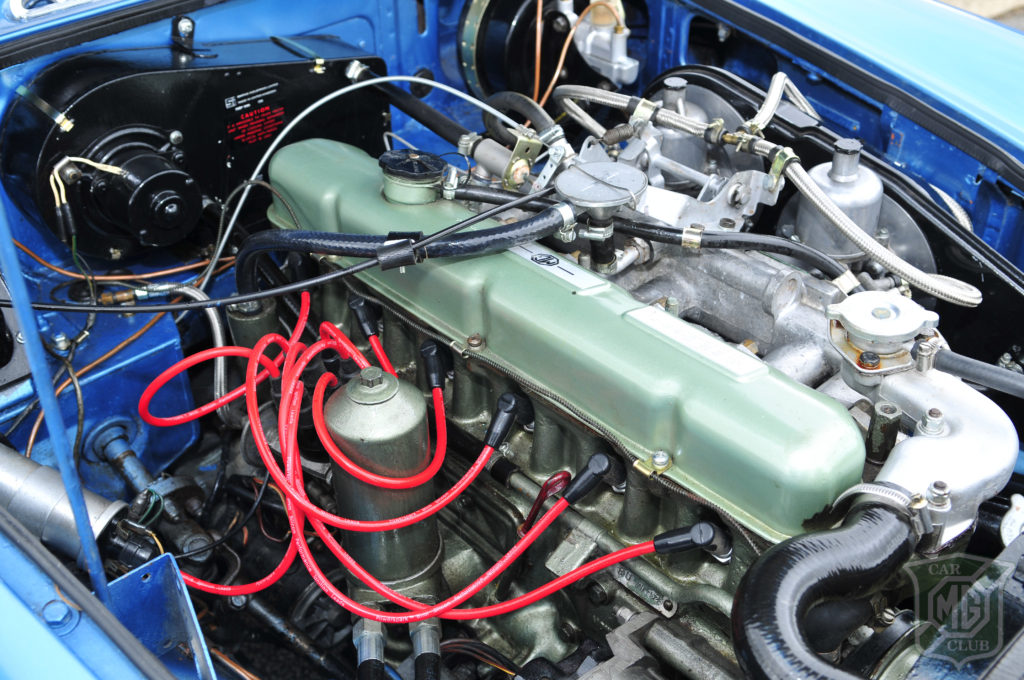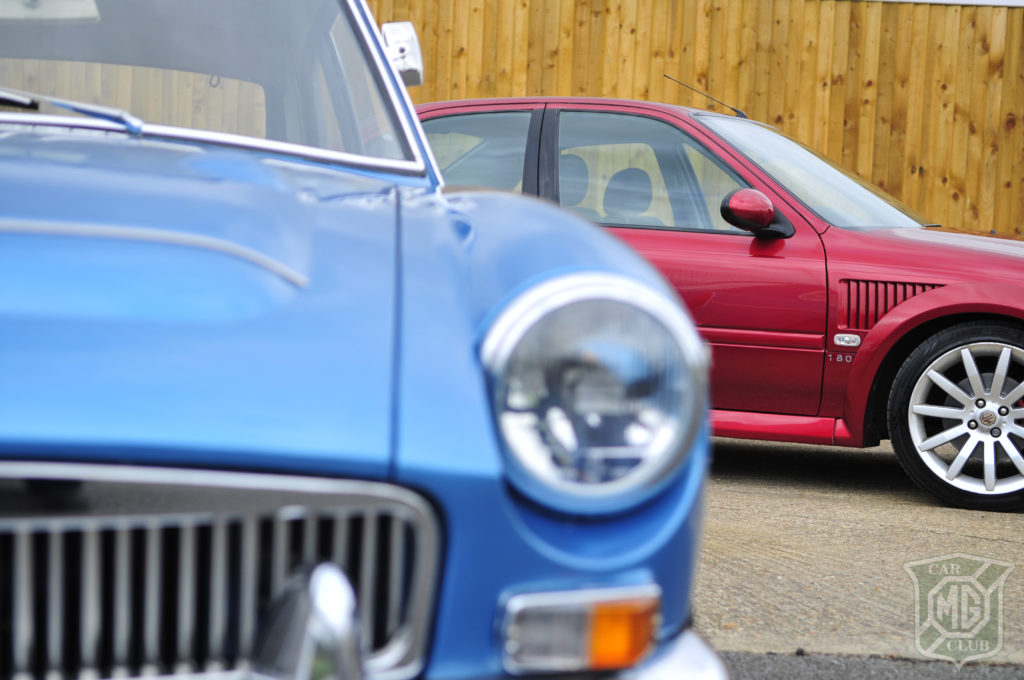The tale of the two sixes
By Colin Grant and Andy Knott
Having long been in the shadow of its predecessor, the MGC celebrated its 50th Birthday in 2017, giving the six-cylinder MG its share of the limelight. Despite being short-lived, it holds an important place in not only MG’s history but in owners’ hearts. To celebrate the milestone, we decided to compare the MGC to another short-lived six-cylinder MG – the ZS 180.
The MG ZS 180
As the people of the world were busy worrying about what might happen when the millennium bug struck at midnight on January 1 2000, BMW were deeply engaged in talks with various companies about Rover’s disposal. After an unsuccessful bid by Alchemy, eventually in May 2000 the Phoenix Consortium, led by John Towers, acquired the Rover brand, moving all production to the famous Longbridge factory leaving the Cowley plant with BMW for production of the MINI to begin.
The Phoenix Consortium needed to move quickly, and decided to work with the car platforms they had. Because of this, the history of the MG ZS can be traced right back through the Rover 45 to the Rover 400 of 1995. Offering a ‘new’ car based on a six-year-old design would appear to have been suicide in modern terms, but MG Rover, as the company became known, were lucky that the Rover 45 Chassis, combined with the Honda-inherited double-wishbone front suspension and fancy, fully independent multi-link rear suspension meant they had a solid base on which to work, and create a real driver’s car.
It was the job of Professor Peter Stevens, who is arguably one of the world’s best-known and most sought-after automotive designers, to redesign the MG Rover range, and make the MG range the eye-catching and bolder arm of the business. Externally, Peter managed to turn the styling from the Rover 45, a car that oozed a genteel charm, into a distinct, aggressive looking motor car with racetrack looks, especially the range-topping ZS 180 model with its 17” wheels, high mounted plane type spoiler and sports exhaust housed within a fabricated stainless steel heat shield; so much so that the four-door saloon model was the basis of the company’s entry into the British Touring Car Championship in 2001.
The interior was also given the Peter Stevens treatment. Out went all of the walnut wood and luxury leather seats, being replaced with new-age touches such as the Dark Rhodium door cappings and the metallic sheen instruments. The seats were given a very modern, sporty feel, shaped with side bolsters to locate the occupants securely, making them an integral part of the MG driving experience.
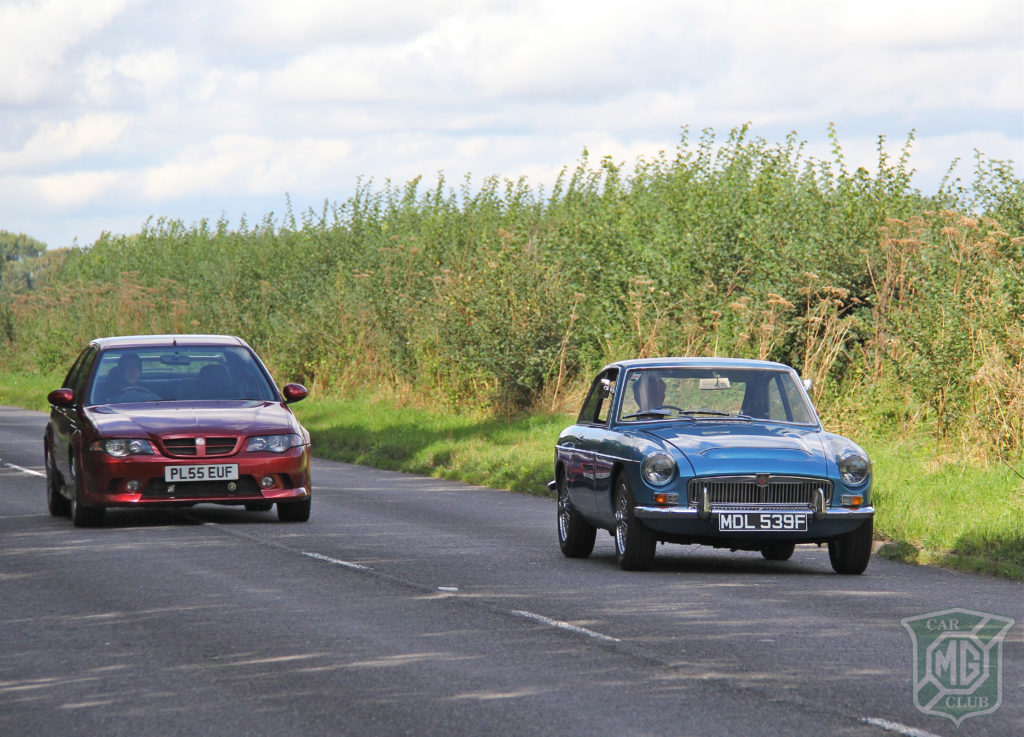
The ZS went into production at a time when many other companies were concentrating all their effort into smaller engines with forced induction. MG Rover decided to buck the trend with their flagship model and go for a 2.5 normally aspirated V6; cubic capacity in the MG Rover facility really did matter. The ZS 180 came equipped with an aluminium, 24-valve, quad-cam KV6 engine, one of the shortest and lightest V6 packages around at the time, and with a 90-degree V, it ideally suited the ZS’s front wheel drive application and delivered 177PS and 240Nm of torque.
The V6 engine meant the ZS had pure, uninhibited grunt, making proper sports car noises because its cylinders were firing in different directions. Swap the air filter boxes and exhaust for an MG Rover XPower aftermarket setup and the V6 sings and howls as the revs rise, unleashing a few more ponies as well. Unlike the forced induction cars, the V6 power delivery was instant with no lag, like a proper British sports car should be!
The chassis specification of the ZS was actually developed on the racetrack by enthusiasts before the MG saloon programme started and was at the heart of its sporting appeal. The ZS sat 20mm lower than the Rover 45 on sports springs, and combined with some Delphi dampers, provided very firm control of low speed suspension travel yet retained the relatively gentle damping when the car encountered pot holes or road humps. To cope with the improved chassis and uprated power, the brakes were uprated on the 180 with high-performance 282mm front discs, 260mm diameter rear discs, with matching larger calipers all round and optimised ABS.
At the press launch Rob Oldaker; MG Rover’s Product Development Director, said: “MG cars have always been appreciated by drivers and I am sure the MG ZS will actually surprise and impress. The MG ZS 180 particularly so, with its powerful and smooth six-cylinder engine, rare in a car of this size”.
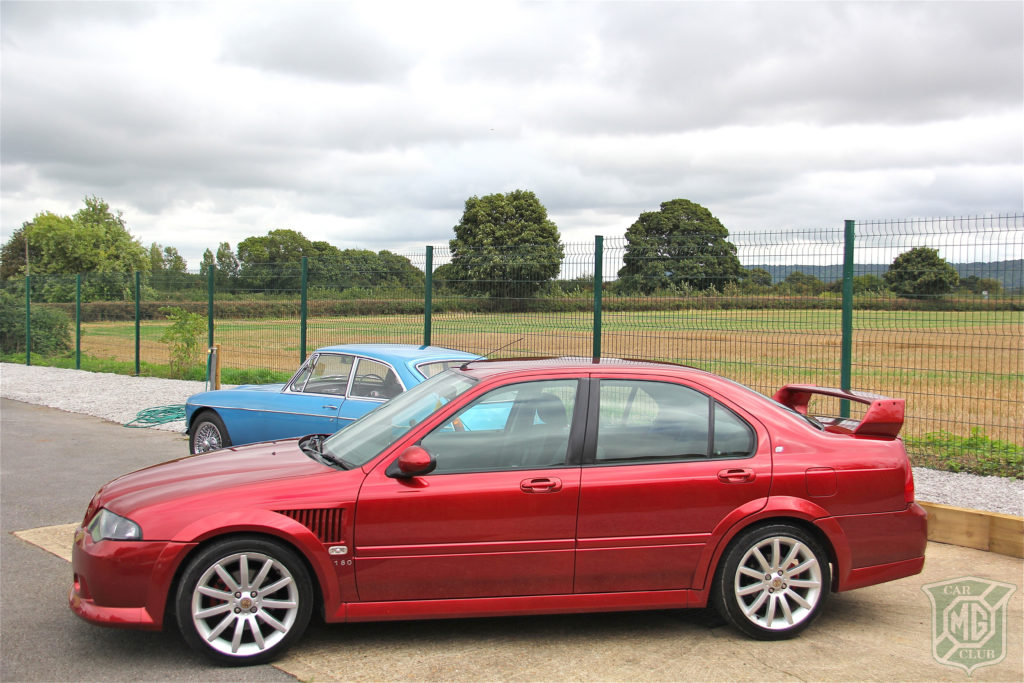
Pencils were sharpened as the journalists pre-planned their attacking of the ZS at the press launch, but they emerged from the cockpit with a smile, admiration for the brand and praised the car on its own merits, and rightly so. There was no doubt the MG was a true driver’s car, and more than that, it was fun!
A major facelift, instigated by Peter Stevens, was put into production on the MG ZS in the spring of 2004, clearly inspired by the awesome MG XPower Supercar, the SV. The changes included updates to the interiors, but the major alterations were focused around the exterior. A revised chunky radiator grille with svelte single unit headlamps was brought in, as was an integrated splitter for the deep-set front bumper, the front wings had ‘shark’s gills’ vents set into them, wheel arch extension front and rear, meaty 17” wheels that were half an inch wider than the previous 17” wheels filled the arches, making the ZS look aggressive with a real presence; in reality it was still as light and fun as the previous model.
During their five-year production period over 27,500 MG ZSs were built at the hallowed Longbridge plant. Today, even the newest MG ZS is 11 years old and many cars have been written off over the years, or broken for spares due to the value of the cars being relatively low – the sellers make more money from the ZS’s various parts than selling a whole car. Thankfully, you can still find the odd low-mileage example with good service history, and many of the remaining ZSs are finding homes with true enthusiasts who know just what an outstanding driver’s car the ZS 180 is, and with its pavement-stopping looks, it looks as good today as it did when built.
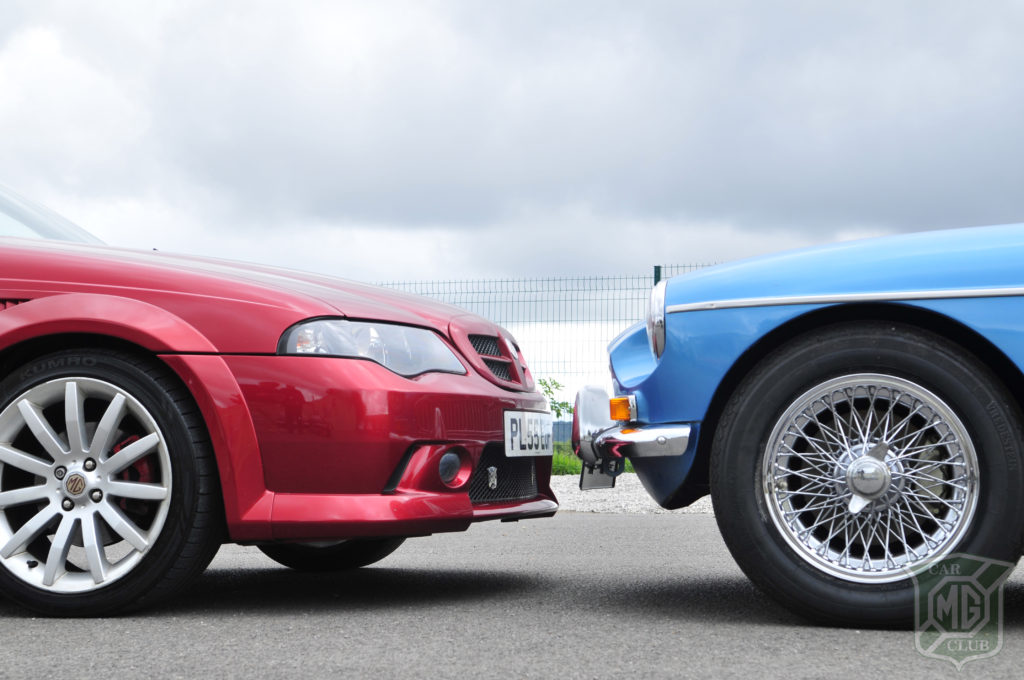
Who can help?
The ZR/ZS/ZT Register of the MG Car Club was formed in 2003 to cater for the needs of those members with a Zed model. Today the register is still very active, organising many events including the hugely popular Zed15 event last year, and can offer technical support as well as a range of quality merchandise. You can contact the Register Chairman, John Thompson, on johnt5@btinternet.com
There are still lots of modern parts specialists around helping to keep the ZS on the road, and many of the MG Rover parts are still available through XPart dealers (www.xpart.com). There are also MG Rover specialist companies who have all the diagnostic equipment, hands-on MG Rover mechanical experience and plenty of quality second-hand spares available, such as:
College Motors, 01993 823560, www.rovermgspecialist.co.uk
Brown and Gammons, 01462 490049, www.ukmgparts.com
South Coast MG Rover Ltd, 01202 677196, www.southcoastmgrover.co.uk
MJS Auto & Marine, 07956 575220, www.mjsautoandmarine.co.uk
Beech Hill Garage, 0118 988 4774, www.beechhillgarage.com
Retro Sports Cars Ltd, 01484 715851, www.retrosportscars.co.uk
John Woods Motorcare, 01244 851371, www.johnwoodsmotorcare.co.uk
Summit Motors, 01628 629707, www.summitmg.co.uk
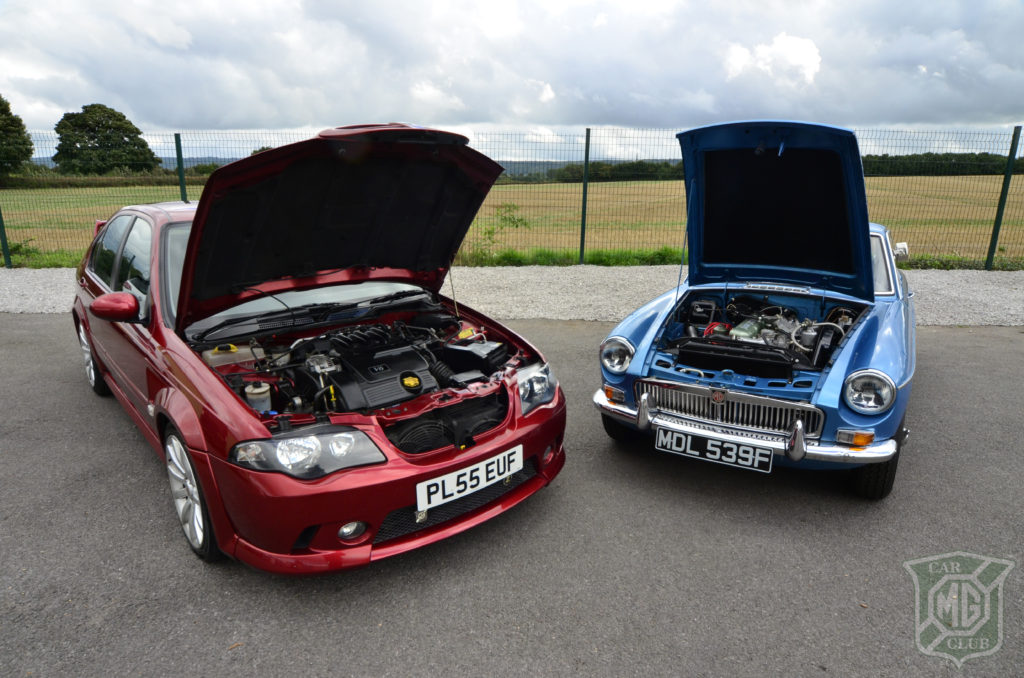
The MGC
The MGC was firmly based on the MGB and announced to the eager press in 1967. This followed the merger of BMC and Jaguar which formed British Motor Holdings. The car was to be powered by an inline 6-cylinder OHV engine of 2912cc. It was capable of producing 145bhp which made it an ideal candidate as a long-legged touring car.
On paper, the MGC should have become one of MG’s best-selling sports cars of all time. In concept, it offered improved performance over the MGB, at a similarly low price. But, by the time the MGC was going into production in October 1967, the Abingdon MG factory had lost control of engine design to other sectors of the vast BL empire, and was forced to compromise with an unsuitable engine that was so heavy, depending on specification, that it could be up to 340lb heavier than the B series.
It ruined the road holding that had been the hallmark of every MG before it. MG did the best they could with the weight problem, redesigning the front suspension to make room for the engine. This meant using torsion bars, rather than coil springs as the suspension medium, combined with telescopic shock absorbers in place of the lever arm devices because so much weight was concentrated over the front axle line, due to the fact that the engine sat far more forward than the designers would have liked, as it had to be able to accommodate the relatively bulky automatic transmission for the American market.
The rear suspension was essentially the same as the MGB, but a much stronger rear axle had to be fitted to accommodate the increase in power. The bodyshell was strengthened to cope with the extra weight, suspension setup and the engine torque, also due to the large radiator being moved forward and the shape of the engine fitted with its twin SU HS6 carburettors, outwardly the MGC gained the distinctive bulges in the unique bonnet. Larger 15” wheels with 5” rims were fitted because of the car’s additional performance potential and to house the Girling 11” discs on the front. John Thornley once said: “It could have been a world-beater, had the engine not been half a hundredweight too heavy”.
The MGC should have been one of the best-selling sports cars of all time, because in concept it offered a much-improved performance over the MGB on which it was based, at a similarly low price. But sadly the MGC was to be very short lived, for in 1969 it was dropped from the MG range. No doubt that its poor reception by the press had affected sales, and by then MG had come within the British Leyland group, where Triumph products were looked upon with favour – and the MGC could have made life difficult for the Triumph TR6.
When the first road test reports on the MGC appeared, MG engineers could not believe that the press had been driving the same cars that they had! The general handling of the car was panned by the press. It was said to suffer from terminal understeer, and to be an unworthy successor to the Austin Healey, which had by now been discontinued. The press did not like the fact that it was so very similar to the MGB, and felt that it should have been a little more modern in its interior appointments. The MGC did find Royal favour, though, as the first car owned by HRH the Prince of Wales. His Mineral Blue MGC was later restored by the Manchester College in 1999 and now resides in the Royal Sandringham Museum.
However, the car was good in a straight line, and once owners became aware of its handling characteristics they could get around bends quite rapidly with the slow in-fast out technique. Other comments stated that the car lacked low-speed torque and an engine that was reluctant to rev, but all agreed as a long distance touring car it was ideal.
But the poor reception the press gave the MGC undoubtedly shortened its production life. Its introduction was soon followed by the formation of the British Leyland group, and the fact that the MGC and Triumph TR6 were competing for the same sector of the sports car market. There was considerable feeling against anything emanating from the old BMC part of the group at the time, and it took only a month or so for the board to make a decision on the future of the model. The MGC was dropped from the range in 1969, while the TR6 continued until 1976.
Who can help?
The MGC Register was formed in 1975 by Richard Cox, asked by the then Club General Secretary Gordon Cobban. Like today, as well as organising newsletters gatherings, technical information and the administration of the Register, an additional and very important function during those early years was how to overcome the various shortages of spares that occurred. Thankfully, there are specialists within the Club (listed below) who can help keep the MGC on the road, and offer modifications that will give the MGC rapid acceleration and excellent road holding; quite the opposite of those damaging press reports of 1967.
Back in 1992, for the Silver Jubilee of the MGC, the Register held their first MGC Day event, an event that has been held every year since, becoming a major event in the MGCC calendar. This year marks the 50th anniversary of this Classic MG, and to celebrate the MGC Register are holding their main event over June 7-12, based at Chateau-Impney, Droitwich Spa. If you would like more information on the event go to the MG Car Club website www.mgcc.co.uk and click on the MGC Register micro-site. There you will find our online booking form and all the details you need to book the event, or contact Ginny Cartmell, Secretary and Registrar MGC Register, Telephone 01208 821552, email: ginnycartmell@btinternet.com
Midland Classic Restorations, 01905 622166, www.midlandclassicrestoration.co.uk
Brown & Gammons, 01462 490049, www.ukmgparts.com
Crown Classic Cars, 020 8891 6101, www.crownclassiccars.co.uk
Fisher Services, 020 8776 7695, www.fisher-services.co.uk
Prestige MG, 01827 259340, www.prestigemg.co.uk
MG Motorsport, 01442 832029, www.mgmotorsport.com
Steve McKie Sportscars, 01246 454527, www.stevemckiesportscars.co.uk
Rees Bros, 01252 323038, www.reesbros.co.uk
Buck Sports & Classic Car Centre, 01296 433550, www.mgsonthenet.co.uk
Dennis Welch Motorsport, 01543 472244, www.bighealy.co.uk
Robin Lackford Eng, 01403 864600, www.robinlackford.co.uk
General Information
MG ZS
Engine type: 2.5 V6 quad Cam petrol
CC: 2497
Max Power: 177 @ 6500rpm
Max torque: 240Nm @ 4000rpm
0-60mph: 7.3 seconds
Top Speed: 139mph
Combined mpg: 29.7
MGC
4,542 MGC Roadsters, 4,457 GTs
Top Speed: 120mph
Performance: 0-60 in 10 sec
Fuel Consumption: Approx 19.5mpg
Price new in 1967: Roadster £1,102, GT £1,249
End of Production: August 1969
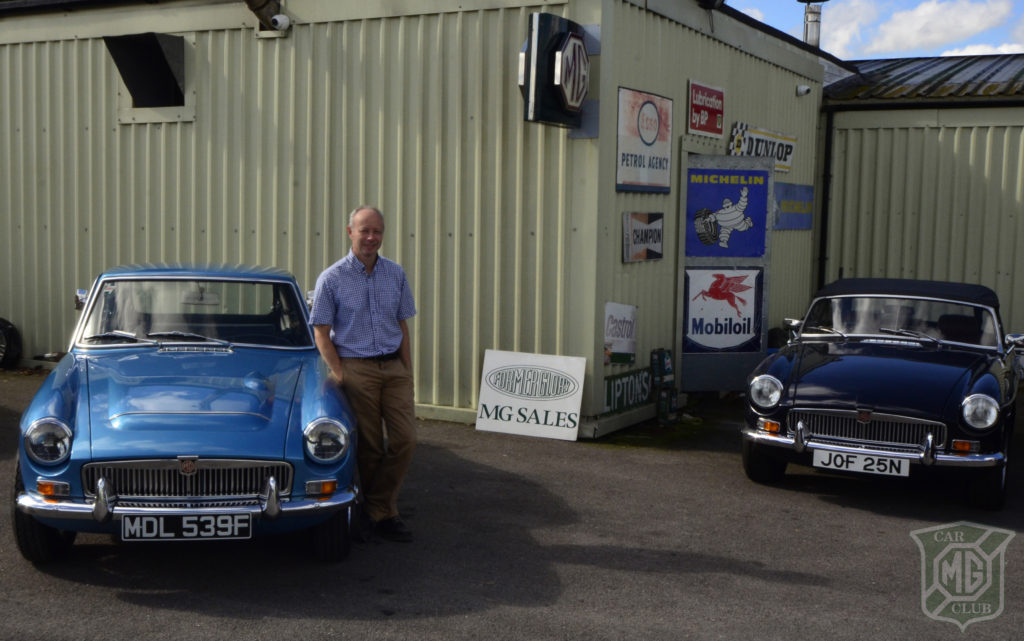
Our thanks go to Nigel Guild of Former Glory who kindly lent us the MGC GT to photograph. Former Glory always has a good stock of Classic Cars available to purchase. For an up-to-date stock list or to contact Nigel please visit www.classicmg.co.uk. Former Glory, Postcombe Service Station, A40 London Road, Thame, Oxon, OX9 7ED 01844 281700

 MG Car Club
MG Car Club